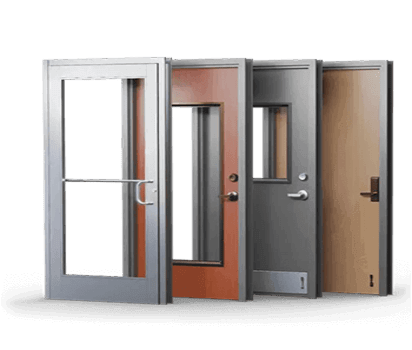
As a facility manager or business owner, you know that commercial doors are more than just entryways - they're critical components of your building's safety, security, and energy efficiency systems. At CDF Distributors, we understand the importance of properly maintaining your commercial doors to ensure they function optimally and stand the test of time. In this comprehensive guide, we'll explore the key aspects of commercial door maintenance, from routine inspections to common issues and their solutions.
Before diving into the specifics of maintenance, let's consider why it's so crucial:
Even with regular maintenance, commercial door maintenance can develop issues over time. Here are some common problems and their solutions:
Symptoms: Door drags on the floor, doesn't close properly, or has large gaps when closed.
Solution: Adjust the hinges or realign the frame. In severe cases, the door may need to be rehung.
Symptoms: Drafts, water infiltration, or visible gaps around the door edges.
Solution: Replace worn or damaged weather stripping. Ensure proper installation for a tight seal.
Symptoms: Door closes too quickly, too slowly, or doesn't close completely.
Solution: Adjust the closer tension and speed. If adjustment doesn't work, the closer may need replacement.
Symptoms: Door is difficult to open or close, or makes scraping noises.
Solution: Lubricate hinges and moving parts. Check for and remove any obstructions. In some cases, the door may need to be planed or adjusted.
Symptoms: Rattling sounds, visible movement in handles or other components.
Solution: Tighten all screws and bolts. Replace any stripped or damaged hardware.
Symptoms: Visible rust, flaking paint, or deterioration of metal components.
Solution: Clean and treat rust spots. Apply rust-inhibiting primer and paint. Severely corroded parts may need replacement.
Symptoms: Door doesn't open or close automatically, or operates erratically.
Solution: Check power supply and connections. Clean sensors and ensure proper alignment. Call a professional for complex issues or motor problems.
To keep your commercial doors in optimal condition, follow these best practices:
Despite diligent maintenance, there comes a time when replacement is necessary. Consider replacing your commercial door if:
When it's time for a replacement, consider these factors:
In conclusion, proper maintenance of your commercial doors is undoubtedly an investment in the safety, security, and efficiency of your facility. First and foremost, by implementing a regular inspection and maintenance routine, you lay the groundwork for longevity. Additionally, addressing issues promptly prevents small problems from escalating into larger, more costly ones. Furthermore, knowing when to replace aging doors is crucial for maintaining optimal performance. As a result of these combined efforts, you can ensure that your entrances continue to serve your business well for years to come. Ultimately, this proactive approach to door maintenance pays dividends in the long run.
At CDF Distributors, we're committed to helping you make informed decisions about your commercial door needs. Whether you're looking for maintenance supplies, replacement parts, or entirely new door systems, our team of experts is here to assist you. Remember, a well-maintained door is more than just an entrance – it's a crucial component of your building's overall performance and your business's success.